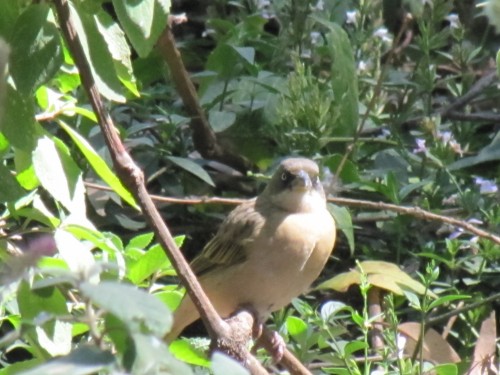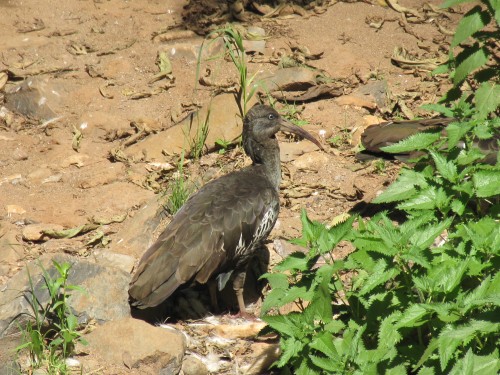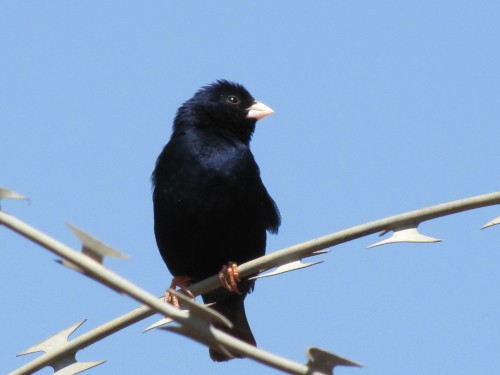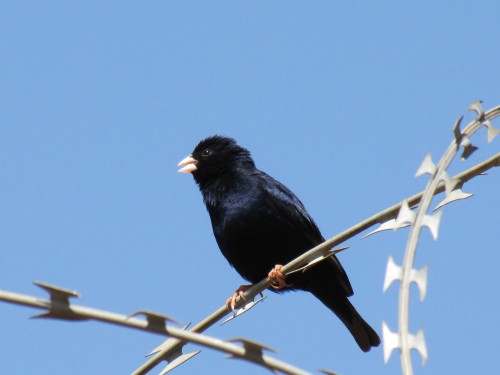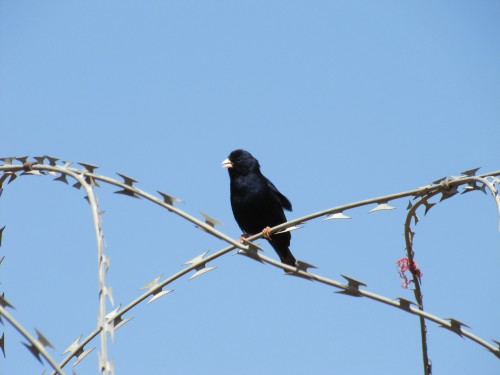A Peaceful Dove a little out of range
One of our television channels here in South Australia is currently showing reruns of Star Trek Voyager series 2. I have been enjoying seeing this series over again, some of which I had previously missed. The episode I watched this evening (Innocence) featured Tuvok who had crashed-landed a shuttle on a well vegetated moon.
Part way through the episode I turned up the volume. Sure enough, there was the unmistakable call of a Peaceful Dove on the soundtrack. LOL.
The Peaceful Dove is a widespread species in Australia. I had no idea that it colonised a moon in another galaxy.
Baglafecht Weaver, Addis Ababa, Ethiopia
Today I feature photos of the Baglafecht Weaver in Addis Ababa.
I think I have the identification of this bird correct. If any of my readers can enlighten me I’d really appreciate the help because I can’t find all that much information about this species online. Sure – I can find heaps of fine photos of this bird in breeding plumage. At that stage it takes on a bright yellow plumage with a black face mask. Only remnants of those bright colours remain in the non-breeding plumage of the bird shown in today’s photos.
These photos were taken on the campus of Bingham International School in Addis Ababa where my daughter was teaching last year. I also found a number of nests nearby which were clearly made by a weaver.
Another Red-billed Firefinch, Addis Ababa, Ethiopia
A few days ago I showed several photos of Red-billed Firefinches taken in the grounds of Bingham Academy in Addis Ababa (click here to view).
I’ve just discovered another lovely photo that I took of this beautiful species, shown above. This species was quite common in the grounds of the school where my daughter was teaching last year so I managed a few good shots. I’m not sure about when they breed but this individual seemed intent on taking this feather with it. I can’t recall if I watched where it went.
Wattled Ibis, Addis Ababa, Ethiopia
One of the interesting birds I saw last December during my stay with my daughter in Addis Ababa was the Wattled Ibis. It was the only species of ibis I saw during my short visit despite the fact that 7 different species can be found in Eastern Africa.
The birds in these photos were taken along the river which flows along one boundary of the school campus where we were staying. Only in the last photo on this page can you easily see the wattle hanging from the throat of the birds. The Wattled Ibis is a bird of the highlands in Ethiopia – usually above 1500 metres – and is quite common. It has also been recorded in nearby Eritrea. While I only saw two birds at a time it is commonly seen in medium sized flocks of 20 – 100.
When feeding it will walk along slowly, prodding the ground for insects, worms, beetles and will take frogs, mice and even small snakes.
Village Indigobird, Addis Ababa, Ethiopia
The Village Indigobird I saw in Addis Ababa, Ethiopia is quite a stunning bird. The black coloured male feathers literally glow in sunlight. Few black coloured birds are quite as brilliant in my opinion. The female – which I didn’t get a chance to photograph – is dull brown, similar to a female House Sparrow.
Village Indigobirds are found over a wide part of Africa south of the Sahara Desert. They are found in bushland, woodlands, cultivated areas and especially around villages – hence the name. Their principal food is seed, especially grain. Being parasitic, the female lays her eggs in the nest of the Red-billed Firefinch (click to see my previous post), so these two species are usually seen in the same area. Unlike the cuckoos, however, the Indigobird does not remove the eggs of the host species.
I should perhaps explain the presence of the razor wire in these photos. The photos were taken inside the campus of the international school, Bingham Academy in Addis Ababa where my daughter was teaching last year. The large school campus is surrounded by a high 3m wall topped in razor wire for security purposes. All visitors and students need to enter through a 24 hour guarded gate. While there have been no incidents that I am aware of, the administrators take security seriously.

